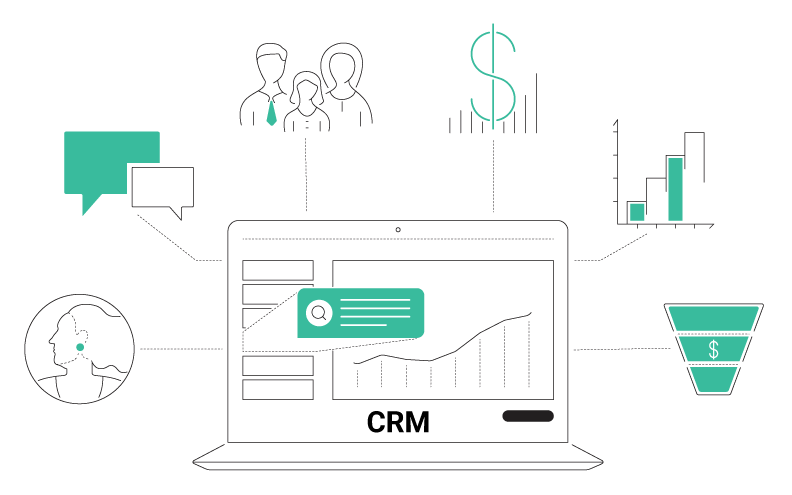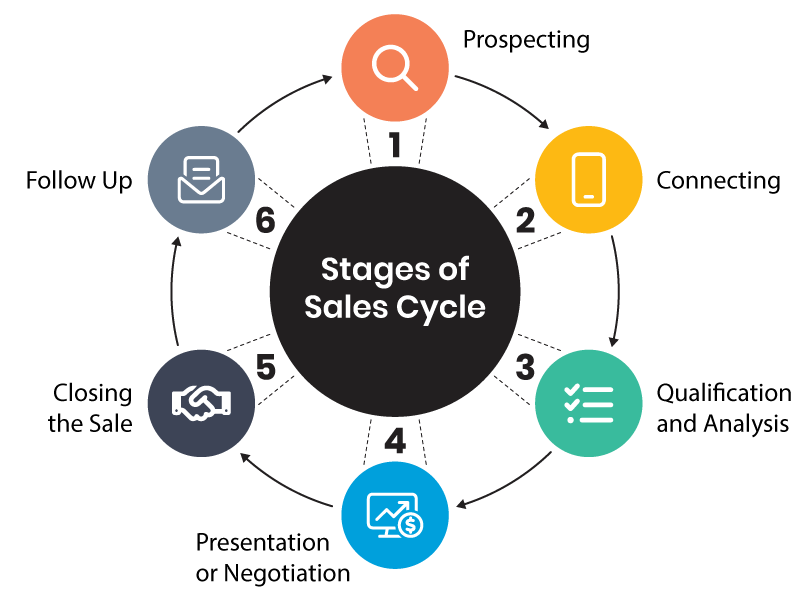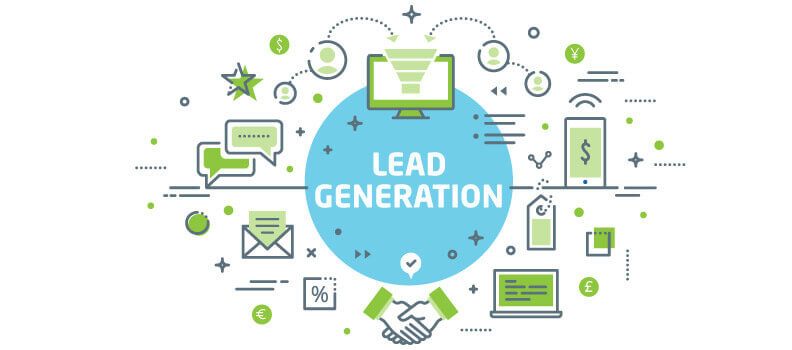Are you tired of seeing your sales growth at a standstill?
Are you struggling to close deals and maximize revenue?
When you’re starting out on your own or you’ve had a small business for a few years, optimizing your sales pipeline might feel impossible. Not only are you in competition with businesses with much larger sales and marketing budgets than yours, but they have entire teams at their disposal! How are you supposed to compete?
The good news is that thousands of customers are waiting for you to find them. And they want exactly what you’re selling. The trick, then, is understanding what is a sales cycle and how to use it to your advantage.
Importance of a Sales Cycle in Revenue Growth
A sales cycle is the process that a customer goes through, from initial contact to making a purchase. It’s an essential aspect of any business as it directly affects revenue growth.
In simple terms, the more efficient and effective your sales cycle is, the more revenue your business will generate.
With customers becoming increasingly informed and empowered, businesses need to adopt an organized approach to their sales processes to remain competitive and achieve maximum revenue growth.
Technology plays a pivotal role in helping your business streamline and optimize its sales cycle. CRM (Customer Relationship Management) systems, for instance, are a great tool that enables businesses to manage interactions with both current and potential customers. A CRM can help to organize, automate, and synchronize sales activities, making it easier to nurture leads, track communication, and monitor progress at every stage of the sales cycle.

If you don’t already use CRM software, this is a great jumping off point for growing your sales pipeline!
The Stages of the Sales Cycle
The process of converting prospects into paying customers is also sometimes referred to as the sales cycle.
This is a series of stages your prospective customers go through, starting with initial contact. When you understand each stage and how to optimize your sales strategy for each one, you can greatly increase your revenue growth potential!
In general, a sales cycle has six main stages: Prospecting, Connecting, Qualifying, Presenting/Negotiating, Closing, and Follow Up.

1. Prospecting
Here, businesses identify potential customers or leads who might benefit from their product or service. This can be done through various methods such as building targeted lists with a partner like Salesgenie. The key here is to build a sales pipeline filled with qualified leads that have a higher chance of converting into paying customers.
2. Connecting
Next, your business wants to contact identified leads from the prospecting stage. This might involve reaching out via phone calls, emails, or in-person meetings to introduce yourself and your business as well as gather more information about their needs and challenges.
Besides these more traditional methods, businesses can also leverage digital avenues like email campaigns and paid ads. Email campaigns offer a direct, personalized approach to engage prospects, delivering tailored content and offers straight to their inboxes. Meanwhile, using Connected TV or online advertising, businesses can connect with audiences in a more interactive and visual way than written content.
3. Qualification and Analysis
Essential aspects of optimizing your sales cycle for maximum revenue growth, these two components work to ensure that your sales team is targeting the right prospects and driving them towards a successful sale.
Sales qualification refers to the process of identifying potential customers who have a high likelihood of purchasing your product or service. It involves evaluating each lead based on their needs, budget, authority, and timeline.
The goal of qualification is not only to identify leads with buying potential, but also to weed out those who are unlikely to convert.
To effectively qualify leads, it’s crucial to have a well-defined ideal customer avatar (ICA). Your ICA outlines the characteristics of an ideal customer. These are things like their industry, company size, and location.
4. Presentation or Negotiation
A well-crafted sales proposal can make or break a deal. It should be tailored specifically for each client based on their needs identified during the initial stages of prospecting.
Start by outlining the problem they’re facing and explain how your product or service is the solution they need. Clearly state what sets you apart from competitors and how working with you would benefit your prospective customer the most.
5. Closing the Sale
This is the culmination of all the hard work, effort, and time that went into prospecting, building relationships, and presenting products or services to potential customers. While it may seem like a natural next step in the process, closing the sale can often be challenging and requires finesse and strategic thinking.
The first step to successfully closing a sale is to understand your customer’s needs thoroughly. By carefully listening to their concerns, pain points, and requirements throughout the sales process, you can tailor your final pitch or proposal specifically to address these factors. This approach not only shows that you have been paying attention, but also positions your product or service as a solution to their problems.
You also want to use persuasive language at this stage. Be confident in your product or service and highlight its unique features and benefits while addressing any objections or doubts your customer may have. Create a sense of urgency by emphasizing limited-time offers or demonstrating how your service or product has helped other customers achieve their goals can also be highly effective in motivating them to make a purchase.
6. Follow Up
Successful sales don’t end at closing the deal! They involve building a strong relationship with customers and following up to ensure that they had a good experience with what they purchased. This is an essential part of optimizing your sales cycle for maximum revenue growth. Don’t believe us? Boosting your customer retention by 5% has been known to increase your total profits by as much as 25% to 95%!
Follow-up after closing a sale serves two main purposes: to maintain customer satisfaction and to generate repeat business. By checking in with customers, you can address any potential issues or concerns they may have, which not only shows that you value their experience but also gives you the opportunity to solve any problems before they escalate.
An effective way to follow up with customers is through personalized communication, such as emails or phone calls. This allows you to tailor your approach based on the individual’s needs and preferences. It also helps in building a personal connection with the customer, making them feel valued and appreciated.
Another important aspect of successful follow-up is timing. It is crucial to reach out soon after the sale has been made while the customer’s experience is still fresh in their mind. This increases the chances of receiving valuable feedback and addressing any issues before they become bigger problems.
Final Thoughts
Continuous improvement is key in the realm of sales. Even after implementing a well-structured sales cycle, it’s crucial to monitor its performance and adapt it to evolving market dynamics. This involves analyzing metrics, feedback, and performance indicators to identify areas that need enhancement.
Your business should be flexible in its sales cycle approach, ready to adjust its strategies as needed in an effort to fill your sales pipeline. And don’t be afraid to jump in and make changes as you gain more customer insights!
It’s never too late to refine your lead qualification process, enhance your communication methods, or even innovate your product or service offerings to better align with the needs of your perfect customers.






